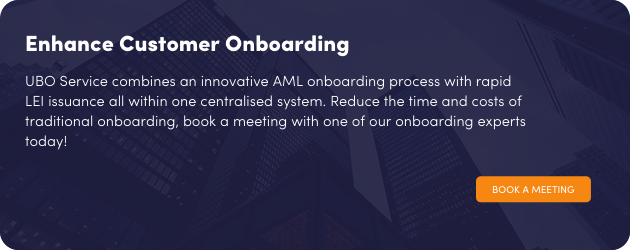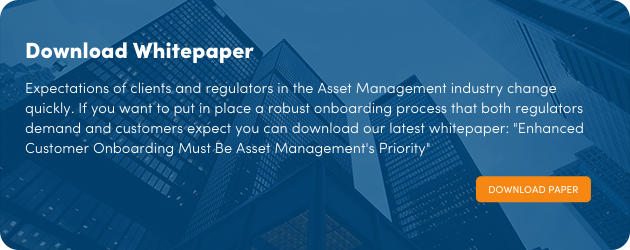Simplifying Client Onboarding for Asset Managers and Investment Firms
The Power of Incorporating LEI’s into your AML Workflow
Brokers and Asset Managers are facing constant challenges to balance significant regulatory change at the same time as trying to minimise customer friction. Ineffective onboarding processes create frustration and increase the potential for client abandonment. A fast and smooth onboarding experience is now expected.
The onboarding processes of both individuals and entities are constantly evolving. MiFID II/MiFiR regulations require legal entities and investment firms involved in the buying, selling, or issuing of financial instruments within the EU market to obtain and maintain a Legal Entity Identifier (LEI). The LEI is a unique and globally recognised number containing an entity’s ownership structure to help identify 'who is who’ and ‘who owns whom’ and greatly enhance marketplace transparency.
LEI codes have the potential to take the complexity out of business transactions. The Global Legal Entity Identifier Foundation (GLEIF) report, A New Future for Legal Entity Identification, describes how the adoption of LEIs delivers benefits and quantifiable value; it reduces operational friction and makes information more accessible and reliable.
The steps required by a customer to obtain (and renew) an LEI when being onboarded considerably overlap with those required by a broker to achieve AML compliance. Combining LEI’s into the customer due diligence (CDD) process can be a powerful tool in assisting the efforts of funds/asset managers to combat money laundering and terrorist funding. The LEI enables asset managers to conduct fully automated, straight-through processing; by replacing outdated manual checks, the LEI increases both the speed and the effectiveness of client onboarding and ongoing compliance checks. This includes improving screening against sanctions and watch lists thereby enabling new efficiencies for both institution and client, lowering costs significantly.
From Onboarding Inefficiencies to Having a Competitive Advantage
Despite advances in technology, client onboarding still requires manual intervention for most brokers and asset managers. This is time-consuming and costly for both the client and the organization. Firms must adhere to CDD and Know Your Customer (KYC) regulatory guidelines within their customer onboarding processes. In particular, online businesses are more vulnerable due to fraudulent attacks of money launderers using stolen or fabricated identities. When taking on new clients, brokers and asset managers must also consider a range of important regulatory requirements in order to detect and prevent potential money laundering activities.
Client onboarding can be a major source of competitive advantage as brokers and asset managers look to achieve higher margins and market share. McKinsey’s Customer Experience Report highlights how poor onboarding practices can negatively impact the customer's overall experience. Identifying a client and providing them with an innovative and streamlined onboarding experience is now a key differentiator.
Having to send potential customers away to obtain an LEI is not a positive onboarding experience. Firms that provide LEI issuance directly within their onboarding, reduce client and operational onboarding friction, customer abandonment, and potential loss of revenue. It also makes the process more transparent, accessible, and reliable. Firms now have an opportunity to cut costs and get more efficient and accurate AML compliance.
Fast & Frictionless Onboarding in Now Easier to Implement
Reducing customer friction and improving the onboarding experience is now a top priority; brokers and asset managers can secure new customers by simplifying and speeding up the onboarding process. The focus is on automation and digitalization to improve AML compliance. This, along with the mandated use of LEIs is key to making their client experience faster and smoother.
GLEIF’s research identified key inefficiencies in the onboarding process such as; businesses using an average of 4 identifiers, onboarding taking an average of 6 –7 weeks, difficulty in accessing reliable reference data, and the resourcing needs to facilitate the current onboarding approaches.
Brokers and asset managers can benefit from availing of service providers that combine industry and technical expertise. Compliance requirements and the entity verification process goes beyond the initial onboarding process. Client data must be maintained and up to date throughout the business relationship, which includes regularly verifying business information and changes to the ownership structure.
UBO Service combines an innovative onboarding process with rapid LEI issuance all within one centralised system, making AML compliance for brokers and asset managers painless. As the first Fintech to become an LEI Validation Agent by GLEIF, UBO Service is best positioned to deliver a faster, uninterrupted onboarding experience that customers expect and regulators demand. Purchasing an LEI alongside an AML report from UBO Service allows brokers and asset managers to provide their clients with everything they need to start trading as quickly as possible.


